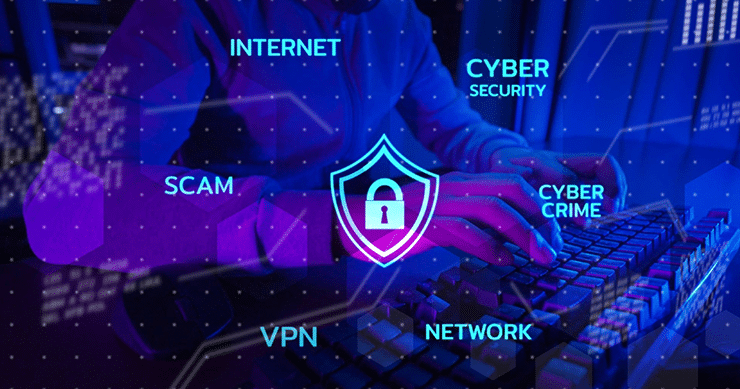What are Vulnerability Scanners?
Vulnerability scanners identify and assess vulnerabilities on a computer or network that could be exploited by attackers. Vulnerability scanners play an important role in maintaining the security posture of a system and preventing cyber attacks. We’ve compiled a bulleted list of key points to consider when performing vulnerability scanning:
- Identify assets: Start by identifying all assets that need to be scanned, including servers, devices, and applications. This will help you prioritize your scanning efforts and ensure that you don’t miss any critical assets.
- Choose a vulnerability scanner: There are many commercial and free vulnerability scanners available. Choose a scanner that aligns with your needs in terms of features and capabilities, such as cloud vulnerability scanning.
- Configure the scanner: Configure the scanner to perform the type of scan you want, such as a full scan or a targeted scan of specific assets or vulnerabilities. You may also need to specify credentials or provide other information to allow the scanner to access certain assets.
- Run the scan: Once you have configured the scanner, run it to begin the vulnerability scanning process. This may take some time, depending on the size and complexity of your network.
- Review and prioritize findings: After the scan is complete, review the findings to identify any vulnerabilities that need to be addressed. Prioritize the vulnerabilities based on their severity and the likelihood of them being exploited.
- Remediate vulnerabilities: Take steps to remediate the identified vulnerabilities. This may involve applying patches or updates, configuring security settings, or taking other actions to reduce the risk of exploitation.
- Repeat the process: Vulnerability scanning should be an ongoing process to ensure that your systems are continuously monitored for vulnerabilities. Set a schedule for repeating the process and make sure to follow it regularly.

Vulnerability scanning software is not the first step of a comprehensive vulnerability management program. The first step in implementing any vulnerability management program is, as established by COBIT, taking a holistic approach, which involves the following:
- Inventorying your business’s assets, and determining which are most critical.
- Standardizing vulnerability/risk definitions and classifications.
- Establishing roles and responsibilities for threat and vulnerability management
- Defining processes and policies for identification, classification, remediation, and reporting.
Once your assets are mapped, it’s time to begin probing for vulnerabilities. This is generally achieved through a network vulnerability scanner. Although some vulnerability management solutions are multi-functional, you may need to use a specialized tool for each.
Vulnerability scanners typically work by gathering detailed information about each asset, then comparing collected data to a database to identify known vulnerabilities. More advanced solutions may also be able to leverage machine learning to detect issues not present in any known database. A vulnerability scan may consist of any or all of the following:
- Troubleshooting and debugging code.
- Scanning network-connected endpoints for open ports.
- Remotely accessing systems to collect more detailed information.
- Monitoring for misconfigured security or remote access tools.
The Center for Internet Security recommends performing an automated vulnerability scan at least once per week. However, in a modern ecosystem — particularly one with multiple supply chain partners and vendors — this may be infeasible. Lightweight endpoint agents offer an alternative to scheduled scans, continuously providing threat intelligence and vulnerability data without any impact on performance.
Start Getting Value With
Centraleyes for Free
See for yourself how the Centraleyes platform exceeds anything an old GRC
system does and eliminates the need for manual processes and spreadsheets
to give you immediate value and run a full risk assessment in less than 30 days
What is Vulnerability Management?
Vulnerability management refers to the process of actively scanning, identifying, and addressing vulnerabilities across your ecosystem. Data collected through vulnerability scans are typically paired with threat intelligence and data on business operations. The end goal of any vulnerability management program is to eliminate critical vulnerabilities as quickly as possible.
The Role of Vulnerability Management in Cybersecurity
In the context of cybersecurity, vulnerability management is all about reducing a business’s threat surface. It does this by identifying vulnerabilities and determining which are most likely to be exploited by an attacker and eliminating them as a potential attack vector. The security community also maintains a library of known software vulnerabilities known as the National Vulnerability Database.
Each vulnerability in the NVD is typically assigned a score based on the Common Vulnerability Scoring System (CVSS) framework, ranging from none (no impact) to critical (severe, possibly catastrophic consequences for the business).
This score is based on the following characteristics:
- Exploitability: How easily can the vulnerability be exploited by an attacker? Does it require special privileges, direct access to a system, or user interaction?
- Impact: What happens as a result of the exploit? Does it have the potential to compromise mission-critical systems or confidential data?
- Scope: Does the vulnerability only allow an attacker to manipulate a single system, or does it provide broad access to an entire network?
Temporality: How long has the vulnerability been known? What tools exist in the wild that would allow criminals to exploit the vulnerability? Is there currently an official fix?
Start Getting Value With
Centraleyes for Free
See for yourself how the Centraleyes platform exceeds anything an old GRC
system does and eliminates the need for manual processes and spreadsheets
to give you immediate value and run a full risk assessment in less than 30 days





